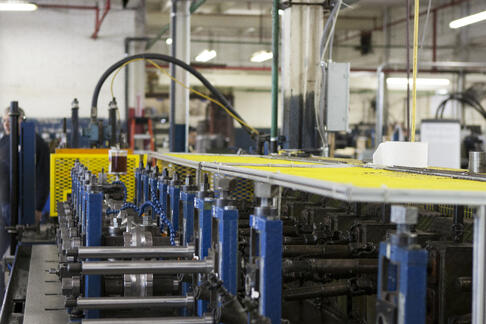With any new metal fabrication project comes plenty of planning, challenges, critical decisions and efficiencies to strive for.
Before you budget your next fabrication project, it’s important that you have a full grasp on the different manufacturing factors to consider, and how you can optimize each step of the process for cost reduction, timeliness and efficacy.

To help narrow down the field of many, we’ve listed the four main factors of your metal manufacturing project and tips to optimize each:
Maufacturing Costs
There are a variety of manufacturing costs involved in a metal fabrication project that help determine the scope and most appropriate production process.
Escalating tooling costs can have a significant impact on the bottom line. The cost of tooling, and the terms of cost amortization, often determines which fabrication process is most appropriate. The run volume of your new project will typically be a major factor that influences tooling costs. Partial tooling investment ties up capital on your supplier’s shop floor, and often requires additional payment or fees to manufacture with another supplier or in-house.
Other costs to consider when starting a new fabrication project include assembly, transportation and logistics costs. These costs can be cut significantly through careful evaluation and conceptual part engineering, without compromising quality.
Metal Part Design
Evaluate part geometry, and identify ways to simplify the profile and reduce the number of bends while still meeting product specifications. In the case of complex sections with multiple bends, hole piercings and punchings, multiple hits are required to achieve the desired profile. These projects are well suited for roll forming because of its ability to form complex linear shapes and to perform secondary operations in-line.
Through roll forming, often a product that has multiple component parts can be reduced to a single-part structure, which effectively streamlines production.
If the run volume will be a lower quantity, a combination of turret punching or stamping and press braking can often achieve similar profiles. However, keep in mind that if a part has too many bends it cannot be stamped.
Press braking, stamping and turret punching also cannot manufacture long parts, which must be left to roll forming or aluminum extruding.
Metal Material Selection
Material selection affects manufacturing cost control and design integrity. With many different material types out there, it can sometimes seem overwhelming to choose. But certain fabrication processes work best with particular materials.
For example, steel is a popular material for fabricated metal parts. Like aluminum, steel is strong and durable, and can be treated to be highly corrosive-resistant. Steel is often fabricated through roll forming, which gradually forms the desired profile by passing a flat-rolled steel coil through a series of tooling dies.
Material selection is a critical part of metal fabrication cost control. When possible, opt for stronger, lighter metals, such as light gauge HSLA. This way, the profile can be reengineered to utilize less material content and drop gauge while maintaining structural integrity.
Fabrication Process Yield
Another consideration for both product design and fabrication selection is which process will yield the most units out of the same amount of material. A profile redesign might help maximize material use and minimize drop-off.
Roll forming reduces drop-off and scrap through coil-fed processing, compared to press braking, turret punching and stamping, which often require blanked sheets. Aluminum extrusions are similarly high-yield, extruding the aluminum billet in the same linear fashion as coil processing.
Bonus Metal Fabrication Tip: Optimize your manufacturing project further by significantly reducing time to market. Take a look at the Modern Engineer’s Guide to Getting it Done to stay ahead of the curve.
Editor's note: This post was originally published in October 2014 and has been updated for comprehensiveness.

